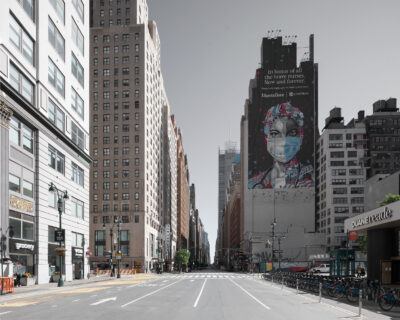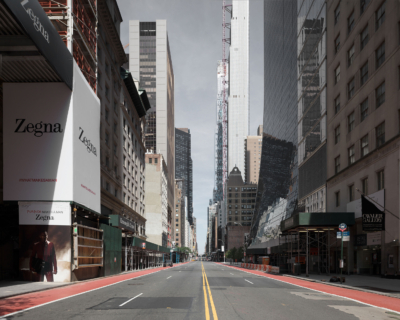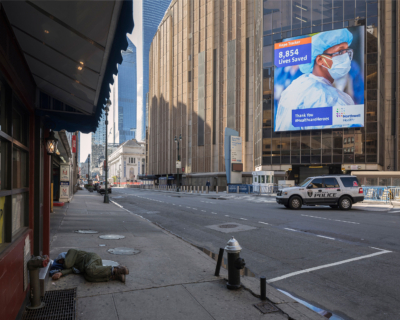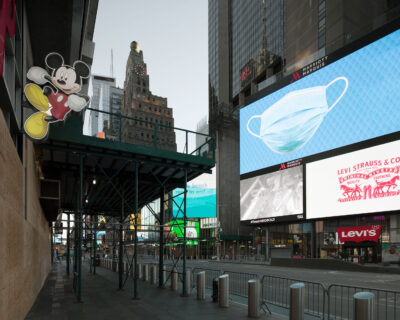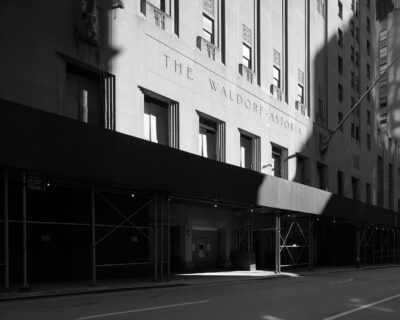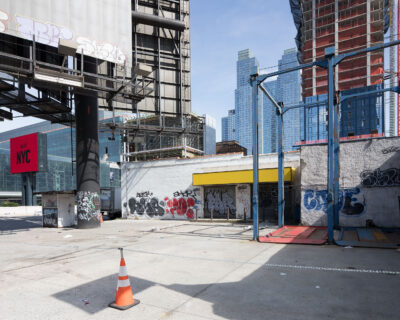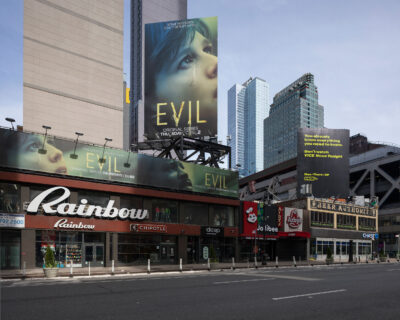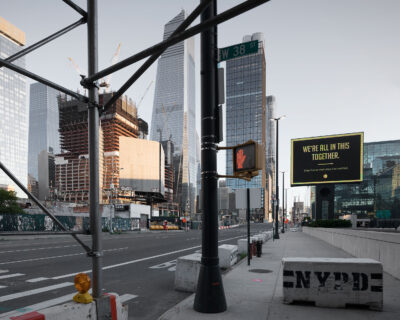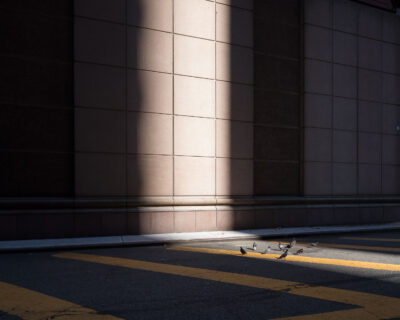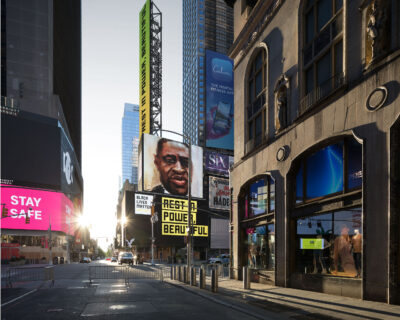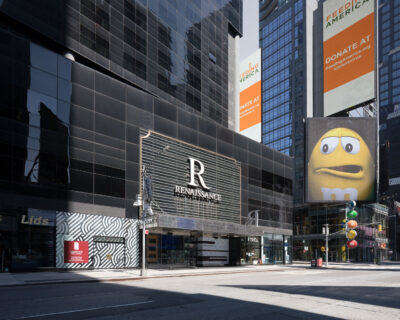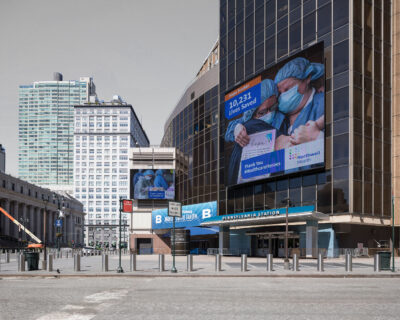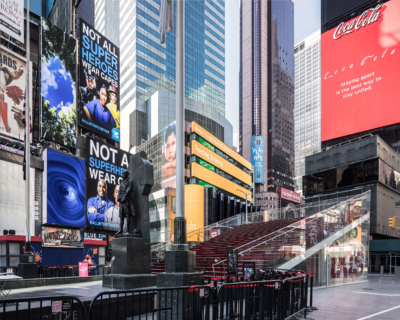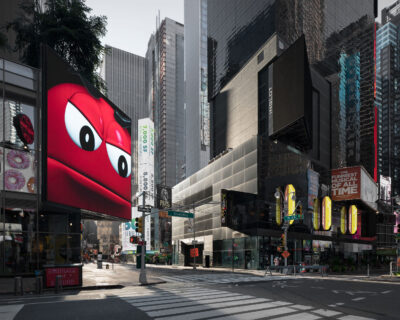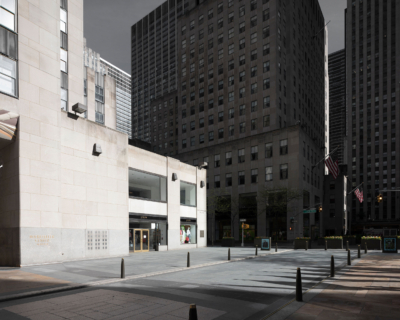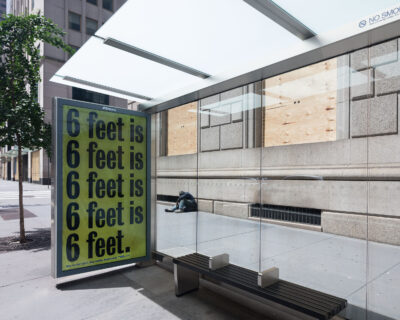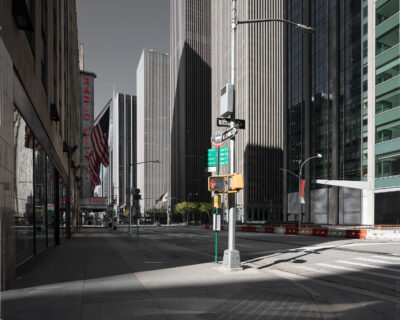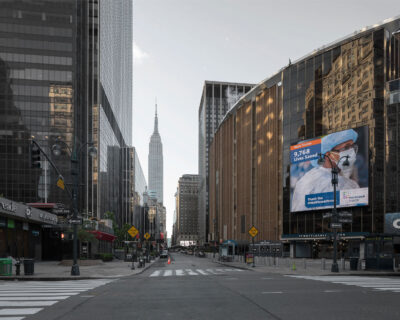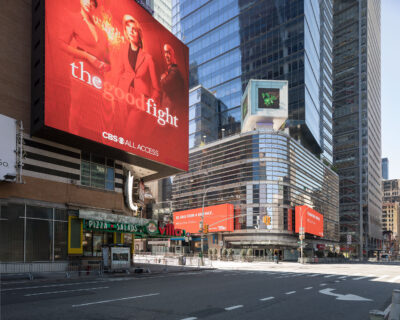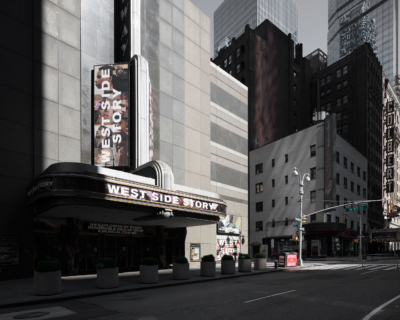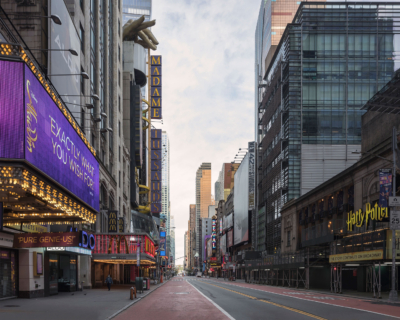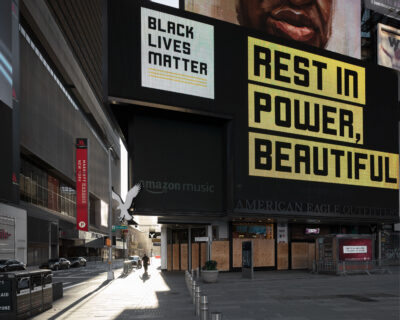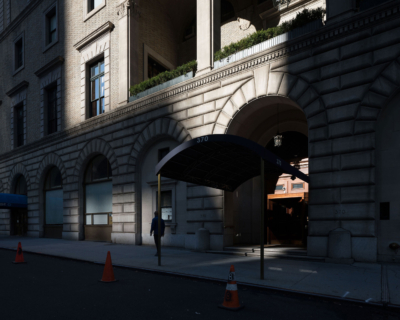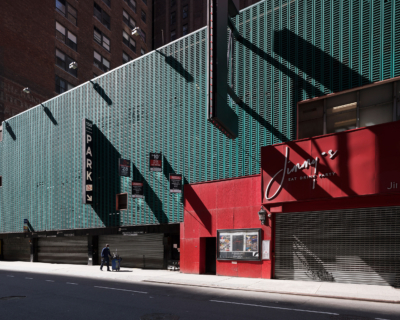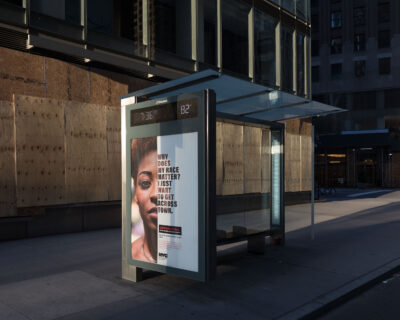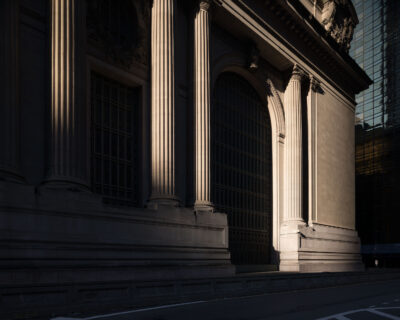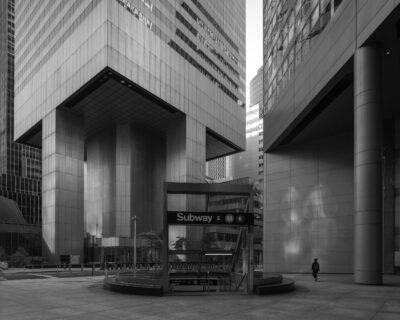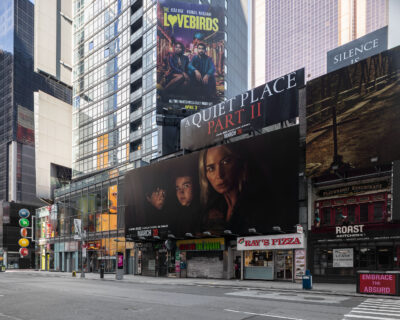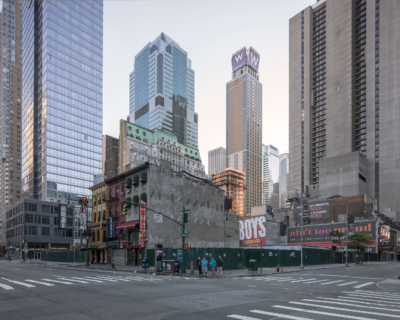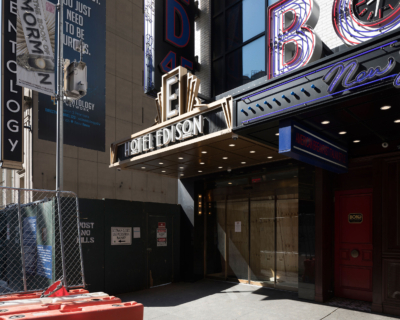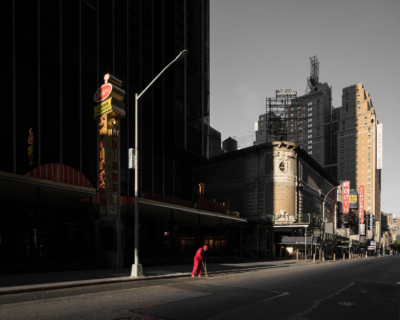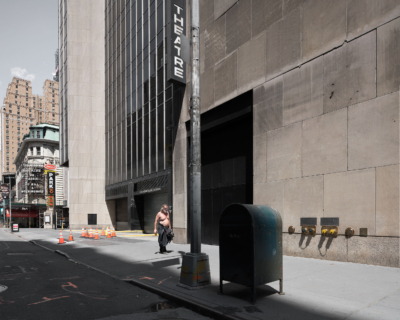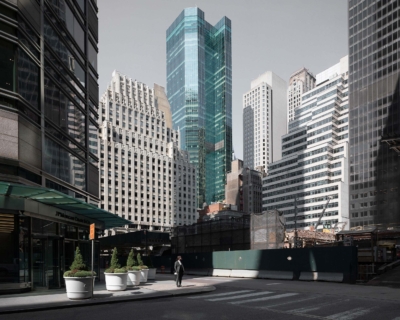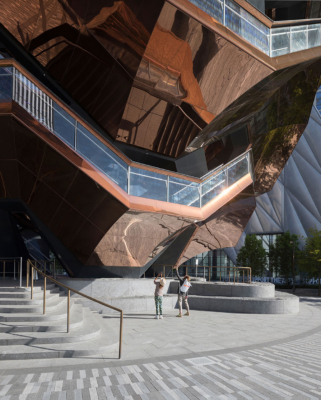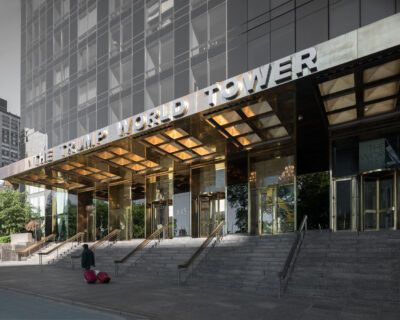A Quiet Place (2020)
In March 2020, as the pandemic hit the world, I was blessed to be spared grievous loss. Like many other workers deemed “non-essential”, I stayed at home when the advisory to do so was issued. I contemplated the sudden violence of a pandemic menacing the city and the entire world. New York was quiet, the streets nearly empty of traffic and people.
In April it dawned on me that this moment had to be recorded, and that I should and could do that. I ventured into midtown and found the theater district, Times Square, the wide avenues lined with blocks of tall office buildings—the famous and typically hectic areas of Manhattan, filled with people and traffic— now silent and empty. Broadway theaters were shuttered but the enormous digital billboards and signs played on, silent messengers informing an audience of no one about the heroism of essential workers, the importance of wearing masks. Advertisements for films and TV shows that might have seemed exciting or thrilling pre-pandemic now had an inadvertently strange and often chilling double meaning. With the shops all closed and sidewalks bare, the mannequins in the windows of Fifth Avenue clothing stores seemed to personify the city’s frozen feel. Early on, the only people I encountered were either homeless or essential workers: masked, uniformed security guards overseeing empty office buildings, coveralled street sweepers picking up scant litter.
But as springtime bloomed, life began to return to the streets. Then a man was murdered in Minneapolis and New York City store owners, fearful of looting, boarded up their windows; protests filled the streets. Through the spring and into the summer, I continued shooting, returning to capture the same places again and again. Covid case numbers dropped and young people gathered outside restaurants and bars. While some areas of midtown remained eerily empty, it became harder and harder to find quiet places. I continued shooting until the early days of December.

